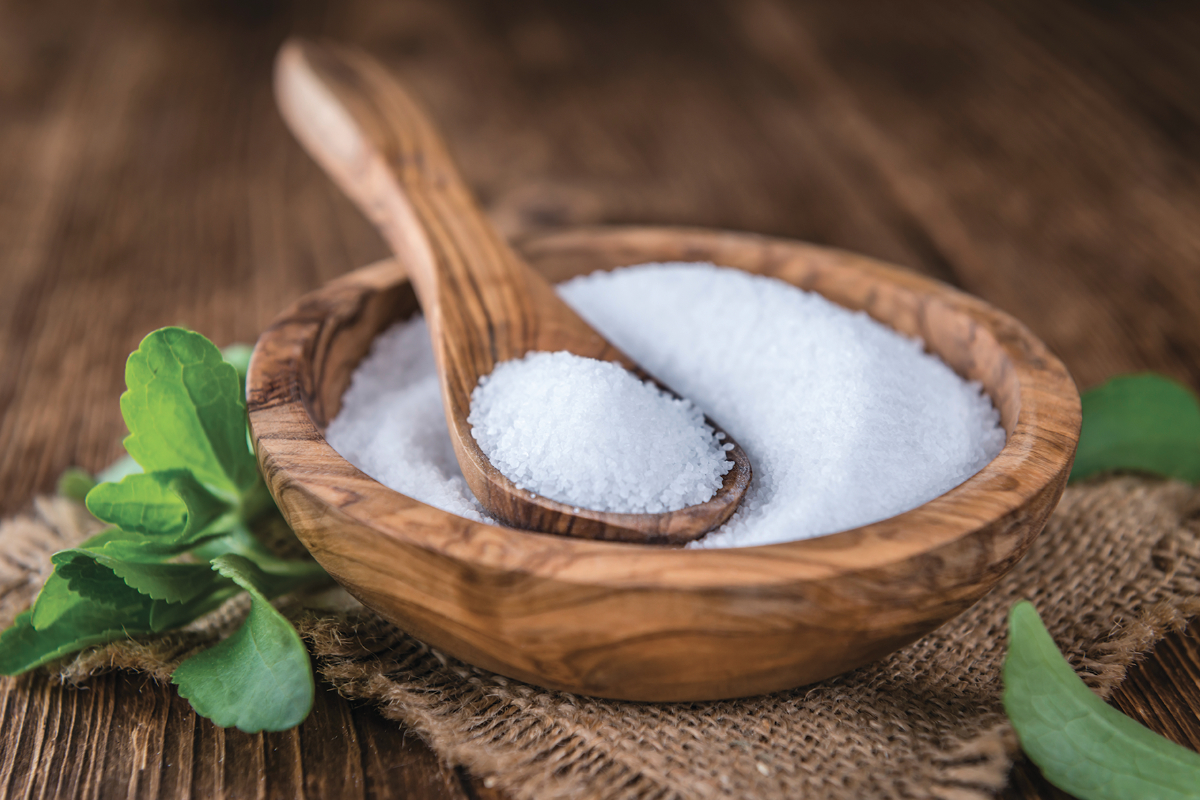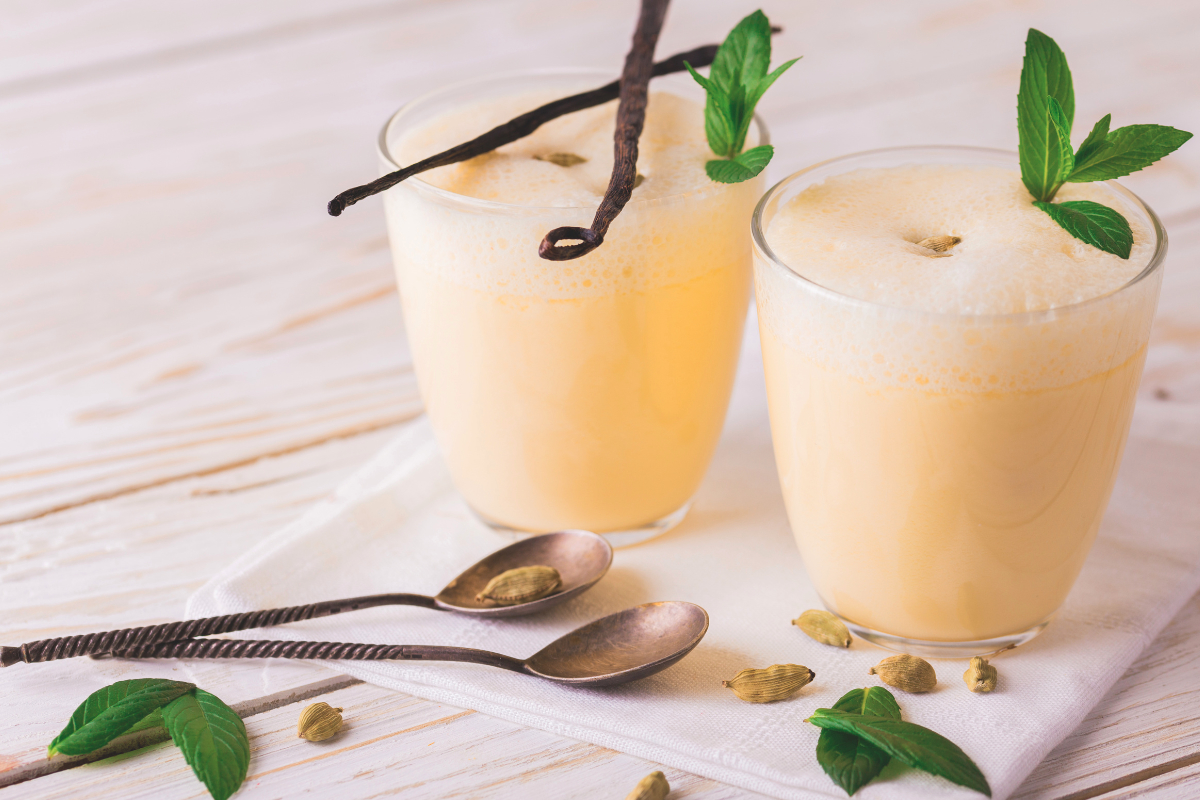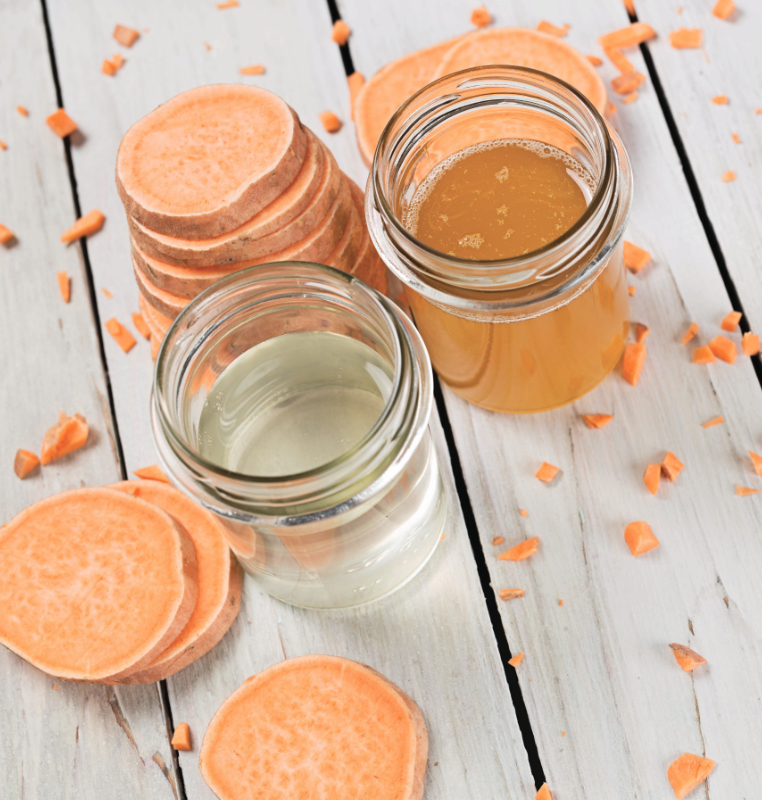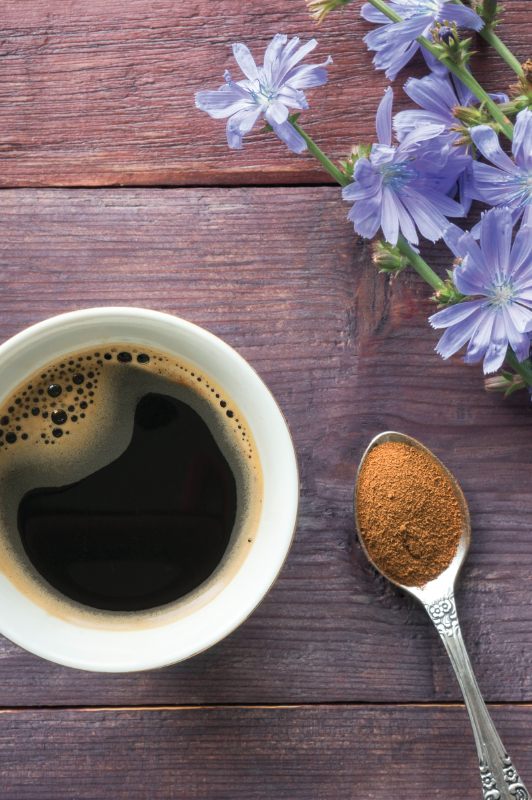CHICAGO — More than three-quarters (77%) of Americans are trying to limit or avoid sugars in the diet, according to the 2018 Annual Food and Health Survey from the International Food Information Council (IFIC) Foundation, Washington. In response, formulators are exploring varied approaches to reducing added sugars while still producing a thirst-quenching, flavorful and often nutritionally enhanced beverage. For many, a sensible amount of traditional sugar is acceptable.
“While consumers want to limit sugar consumption, they refuse to compromise on taste,” said Andrew Ohmes, global director, high-intensity sweeteners, Cargill, Minneapolis. “Achieving a more sugar-like taste (without all the sugar) is critical to product success.”
Dirk Reif, technical director, specialty and high potency sweeteners, Archer Daniels Midland, Chicago, said, “Sugar is a difficult ingredient to replace. Replacing sugar often means compromised mouthfeel, taste or sweetness levels.”
Moderation may be the key. Sensibly sweetened beverages may be possible through the strategic use of sugar with other sweetening ingredients or creative combinations of other naturally sweet ingredients, including sweeteners, flavors and taste modulators.
“Everyone would love to have a magic bullet, a zero-calorie, naturally sweetened beverage that tastes exactly like a full-sugar version,” said Leanne Wortman, senior food scientist at Cargill. “The reality is that all sweeteners, caloric or not, taste slightly different from one another. This can have an impact on a beverage’s flavor profile and its sweet/sour balance.”
For many, that magic bullet includes not introducing any artificial ingredients into the formulation. There is no simple ideal, but clean and sweet is a good place to start.
Clean label formulating
Beloit, Wis.-based Kerry surveyed more than 750 U.S. consumers in early 2018 to gauge their perceptions of various sweetening ingredients. The study showed that consumers seek products made with natural and familiar sweetening agents, such as honey and sugar. The ideal product formulation varies across consumer segments and categories. Some want products formulated with less sugar but with the same taste, while others seek products with both less sugar and less sweetness. These choices are influenced by category, need state, portion size and by other nutritional facts, such as calories and protein levels.
“The types of sweetening agents consumed by Americans have gone through a dramatic change,” said Rajesh Potineni, vice-president of taste innovation, sensory and analytical sciences at Kerry. “High-fructose corn syrup consumption grew steadily for 30 years, but has been in decline since the early 2000s. Our research showed that consumers have a strong preference for naturally derived sweetening agents, such as honey, sugar and maple syrup.”
 Honey was viewed as the most natural sweetening agent, while aspartame was viewed as the most artificial. Stevia was the only sweetener that had mixed opinions; 46% of consumers believed it is a natural sweetener, and 54% deemed it artificial. Despite the ambiguity, stevia was the fourth most-preferred sweetener among U.S. consumers, according to Kerry’s research.
Honey was viewed as the most natural sweetening agent, while aspartame was viewed as the most artificial. Stevia was the only sweetener that had mixed opinions; 46% of consumers believed it is a natural sweetener, and 54% deemed it artificial. Despite the ambiguity, stevia was the fourth most-preferred sweetener among U.S. consumers, according to Kerry’s research.
It’s been 10 years since high-purity stevia glycoside extracts were generally recognized as safe by the U.S. Food and Drug Administration. Since that time, this high-intensity sweetener has gone through many production and extraction enhancements, resulting in better-tasting and more economical varieties.
Cargill was a forerunner in providing commercially scalable quantities of some of the best-tasting parts of the stevia leaf, the steviol glycosides known as Reb M and D. Now, through the joint venture Avansya, which Cargill entered into with Royal DSM, The Netherlands, in early November, the companies are producing Reb M and D through fermentation of specially crafted bakers’ yeast. The move provides manufacturers a more scalable, sustainable and low cost-in-use solution than if these same molecules were extracted from the stevia leaf.
“While stevia leaves contain minute quantities of these sweet components, our novel approach to production uses fermentation to produce a more affordable and environmentally viable solution to sugar reduction,” Mr. Ohmes said. “Beverage makers can create great-tasting beverages with deep calorie and added-sugar reductions, up to 100%.”
Another next-generation stevia sweetener is being rolled out by SweeGen Inc., Rancho Santa Margarita, Calif. It is said to have a taste profile closer to sugar, high solubility for use in concentrates, high stability and a price competitive to sugar. SweeGen uses plant-based bioconversion to produce its non-G.M.O. stevia sweeteners at a commercial volume.
“Our newest stevia sweetener contains Reb E 95%, Reb M (below 50 p.p.m.) and other stevia compounds, and provides the food and beverage industry an economic solution for 100% sugar reduction,” said Katharina Pueller, director, natural sweetener business.
Specialty natural sweeteners also are gaining traction. Isomaltulose, for example, is a low-glycemic sweetener made from beet sugar. It is fully digestible; thus, it provides full carbohydrate energy in a balanced and sustained way, eliminating the undesired “boost and crash effect” generally associated with other sugars, said Kyle Krause, regional product manager, North America, Beneo, Parsippany, N.J.
“It has similar technological and sensory properties as sucrose,” Mr. Krause said. “Its molecular structure confers a high level of stability in all types of beverages, as it is heat resistant, making it suitable for ultra-high-temperature processing.”
Isomaltulose occurs naturally in honey. It has a pleasant, rounded sweetness that is well-suited for beverages with no aftertaste.
Inherently sweet ingredients
Fruit and vegetable ingredients long have been considered a natural way of sweetening beverages. Their predominant sugar is fructose, which is approximately 20% sweeter than table sugar. In many instances, juices are used for their sweetening function, as well as to provide color, flavor and nutrition. In some instances, its acidity assists with adjusting the pH, which in turn may influence taste profile.
 “Juice beverages are often promoted as a healthy choice to satiate consumers’ sweet fixes, but they can contain a significant amount of sugar,” said Paul Verderber, vice-president of sales, Carolina Innovative Food Ingredients, Nashville, N.C. “With recent changes in nutritional labeling and consumer attitudes, juice brands can no longer presume that their products will be perceived as the healthy option, but rather must proactively work to ensure that they continue to offer consumers a beverage they can feel good about consuming.”
“Juice beverages are often promoted as a healthy choice to satiate consumers’ sweet fixes, but they can contain a significant amount of sugar,” said Paul Verderber, vice-president of sales, Carolina Innovative Food Ingredients, Nashville, N.C. “With recent changes in nutritional labeling and consumer attitudes, juice brands can no longer presume that their products will be perceived as the healthy option, but rather must proactively work to ensure that they continue to offer consumers a beverage they can feel good about consuming.”
In order to maintain their inherently naturally healthful position, it is increasingly important for juice brands to reduce sugar in their products where possible. One way to do this is to dilute 100% juice with water, and then add back taste with flavors and non-nutritive sweeteners. Using high-brix juices also may assist with sweetness without contributing to added sugars.
“With the new labeling requirements, using added sugars could have a negative impact on product labels,” said Jeannie Swedberg, director of business development, Tree Top Inc., Selah, Wash. “Juice ingredients may assist by adding natural sweetness and nutritional value, often without the added sugars.
“Juice concentrate counts as added sugar, although you can subtract the single-strength equivalent. You do not have to count single-strength juice as added sugar. Fruit puree does not count as added sugar.
“Juices can replace sugar or corn syrup in many applications, allowing consumer appealing label claims such as ‘sweetened with real fruit juice.’ In many applications, mom feels better about feeding her kids products that are sweetened with fruit juice or fruit puree.”
Most consumers do not think of vegetable juices as being sweet, but ingredient suppliers are employing advancement technologies to now make them viable sweetening options, too.
Jicama juice concentrate provides such an opportunity. Made from 100% vegetable, it delivers a neutral color and flavor profile with intense sweetness.
“Jicama juice concentrate is an alternative to traditional sweeteners that can support reduced calorie formulating,” said Leonardo Christol, marketing manager, Kerr Concentrates, Salem, Ore. “It will not impact added sugar labeling when diluted back to single strength.”
In sensory profiling, jicama juice concentrate has flavor and sweetness impact close to that of apple and pear juice concentrates. The difference is jicama brings vegetable goodness to the application, as it’s a concentrated source of potassium — a nutrient lacking in many diets, as well as a critical electrolyte for hydration — and contains other vitamins and minerals, even some plant protein.
 Carolina Innovative Food Ingredients markets clarified sweet potato juice, which may help to reduce sugar content in juice applications, while maintaining desirable sweetness and other sensory qualities and also providing nutrition in the form of vitamins and minerals, in particular potassium and magnesium. The company’s technical team has conducted several tests blending the clarified sweet potato juice with apple and other fruit juices.
Carolina Innovative Food Ingredients markets clarified sweet potato juice, which may help to reduce sugar content in juice applications, while maintaining desirable sweetness and other sensory qualities and also providing nutrition in the form of vitamins and minerals, in particular potassium and magnesium. The company’s technical team has conducted several tests blending the clarified sweet potato juice with apple and other fruit juices.
“When blended by volume with the juices, it yields a juice with no major differences from the unblended juice in color, flavor, texture, viscosity or aroma,” Mr. Verderber said. “We found that the sensory profile remained consistent up to a 50% blend of clarified sweet potato juice and apple juice, and the clarified sweet potato juice contains about half as much sugar as the fruit juices, and virtually no fructose, allowing it to significantly improve the sugar profile of these juices in a blend.”
Tricks of the trade
There’s a range of other ingredients to assist with everything from enhancing sweetness to brightening flavors to providing the full-bodied mouthfeel of sugar-sweetened beverages. Numerous suppliers offer these natural flavors, which often are described as taste modulators.
Fibers also may assist. Chicory root, also known as inulin, may be added to beverages to enhance sweetness while increasing fiber content. Chicory root fiber is also known to work synergistically with high-intensity sweeteners and has masking properties to help provide a clean label.
“One of our liquid syrup chicory root fibers is 65% as sweet as sugar, and there’s a powder that is 55% as sweet as sugar,” said Carl Volz, president, Sensus America Inc., Lawrenceville, N.J. “These products help with sweetness and do not contribute added sugar.”
They are declared on the Nutrition Facts Label as fiber. Prebiotic fiber label claims are possible, too.
Ms. Wortman said beverages sweetened with stevia ingredients often benefit from the addition of just a bit of erythritol.
“We found adding a small amount of erythritol helped round out the sweetness profile and bring out the flavor,” she said. “Erythritol pairs well with many high-intensity sweeteners.
 “Another trick is to adjust acidity levels to achieve the optimum sweet/sour balance. Collaborate with flavor houses (and tap into their expertise). A knowledgeable ingredient supplier, with an experienced beverage application team, can help beverage makers reduce product development time to create innovative, great-tasting beverages, even in challenging reduced- and no-sugar applications.”
“Another trick is to adjust acidity levels to achieve the optimum sweet/sour balance. Collaborate with flavor houses (and tap into their expertise). A knowledgeable ingredient supplier, with an experienced beverage application team, can help beverage makers reduce product development time to create innovative, great-tasting beverages, even in challenging reduced- and no-sugar applications.”
ZoomEssence Inc., Hebron, Ky., uses a patented low-temperature drying process to more efficiently deliver the active flavor components and aroma in its flavor extracts. This enables the developer to significantly reduce flavor use rates while delivering great flavor performance.
“We have found this advantage allows us to obtain the desired sweetness level with less stevia, driving down sweetener cost and limiting the residual bitterness,” said Robert G. Corbett, chief executive officer. “Sweetener can sit on top of flavor, decreasing its performance. Our patented technology, however, allows brands to rebalance, and for the flavor to really pop, increasing the flavor experience. It also means brands use less flavor, which reduces their cost-in-use.”
Mr. Corbett explained that the trend away from artificial sweeteners, such as sucralose and acesulfame potassium, toward natural sweeteners like stevia and monk fruit presents challenges of bitterness and off-notes along with a high cost-in-use. ZoomEssence has combined several proprietary ingredients to deliver concentrated actives that mask these undesirable tastes.
“This allows the formulator to reduce the impact of these undesirable notes on the perception of sweetness and enhance the performance of the actual flavor,” he said. “Typically, we deliver lower use rates of both sweetener and flavor, significantly reducing cost in use while achieving great taste.”
While added sugars and sweetener type influence purchase decisions, shoppers also look at the whole beverage package. This includes nutritional content and addition of value-added ingredients. Because these components impact flavor and mouthfeel, it is paramount that a sweetening system be considered very early in the product development cycle.
“Sweetness cannot be addressed in isolation,” Mr. Potineni said. “You need to be able to deliver a balanced taste experience for consumers.”




